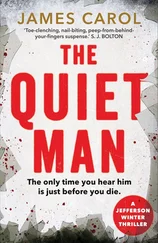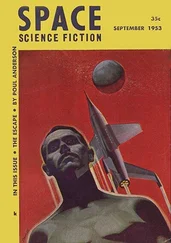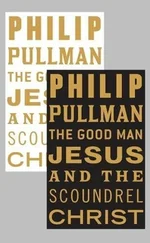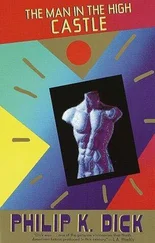Roy DeMeo was an out-of-control psychopath, an associate of the Gambino crime family, who would eventually become the subject of a popular true-crime book appropriately entitled Murder Machine, by journalists Jerry Capeci and Gene Mustain.
Roy DeMeo was born and raised in Canarsie, a tough neighborhood in one of the toughest towns anywhere in the world—Brooklyn, USA. As a boy Roy had been overweight, Humpty Dumpty–like, and was regularly put upon and abused by neighborhood bullies. He had thick black hair, dark eyes, olive-colored skin, and a huge belly, and waddled like a penguin. His older brother Anthony, known as Toby, was a tough, muscle-bound kid—always there to protect Roy—but he joined the marines, went to fight in Vietnam, and never came back. Thus fat little Roy was left to fend for himself on Canarsie’s mean streets.
The young Roy DeMeo always admired neighborhood mob guys, of whom there were many. They were all over Canarsie, mostly members of the Lucchese crime family, with their fancy cars, fancy women, fancy clothes, and huge rolls of hundred-dollar bills. That’s what Roy wanted for himself; that was Roy’s dream; that’s what Roy saw in his future. Roy’s heroes were Lucky Luciano, Al Capone, and Albert Anastasia, infamous killers all. Those were the people Roy looked up to, wanted to emulate. He longed to be respected and feared like them.
Though a bright child and good with numbers, Roy did not do well in school. School didn’t interest him in the least. He knew that what he wanted he could never get in any classroom. What he wanted you could learn only on the street, so that’s where Roy spent his time; that’s where he went to school; that’s where Roy DeMeo applied himself.
The first order of business was to lose weight and to get muscular, and the young DeMeo began to diet and lift weights with a vengeance, and soon enough he lost the baby fat and protruding stomach, and his muscles became large and rock hard. Now when anyone bothered him, Roy gladly beat him to a pulp. He was an extremely dirty fighter, biting and gouging people’s eyes, and soon—as he planned—he secured a reputation as a tough guy, as someone who was stand-up, dangerous; no one to trifle with—not an easy task in Canarsie.
As a young teen, DeMeo began loaning out (shylocking) the money he earned working at a supermarket. If someone didn’t pay back on time, Roy took apparent delight in beating him up. He quickly became a loudmouthed bully, mean and sadistic, swaggering around with his mouth twisted up as if he’d been sucking on lemons. He had a chip on his wide shoulder and dared people to try and knock it off. He was trouble looking to happen.
DeMeo loaned money to a kid named Chris Rosenberg, who sold nickel bags of pot. With the money Roy loaned him, Chris was able to buy weight and was soon selling ounces and even pounds. Roy made Chris his partner, co-opted him and his pot business. This would be a recurring theme in DeMeo’s bloody, infamous life of crime: he made people who owed him money and couldn’t pay him on time his partner. This was, in fact, a classic Mafia ploy, used from its very inception. The word mafia in lowercase means a man of respect, an individual who has pride and honor and walks with his head high. Mafia, capitalized, has come to mean the criminal enterprise that began in Sicily in the mid-1800s and spread its insidious tentacles all over the globe. For many years the Mafia was a highly secretive, highly successful criminal enterprise the likes of which the world had never known; all its members took a blood oath to the particular family they were inducted into. Until Joe Valachi, at the 1963 McClellan Senate hearings in Washington, told about the intricacies of the Mafia—where it began, how it worked, its structure—law enforcement had no comprehensive understanding of the Sicilian Mafia. In fact, there are three distinctly different criminal organizations in Italy: the Camorra from Naples, the ’Ndrangheta from Calabria, and the Mafia from Sicily. Of the three the Camorra was—and still is—the most violent and vicious.
The infamous John Gotti was one of the few Neapolitans who was allowed into the ranks of the Sicilian Mafia, into the Gambino family, which many say was a fatal error in judgment on Carlo Gambino’s part. An exceedingly cunning individual, Carlo Gambino was a small, frail, unassuming Sicilian who dressed and acted like a simple peasant from Sicily, when in truth he ran the largest and most successful of the five New York crime families. Carlo opened the books to John Gotti because Gotti killed a man who was stupid enough to kidnap Carlo’s nephew Sal and murder him after a ransom was paid; that, of course, was a one-way ticket to a graveyard, and John Gotti gladly killed the jerk who masterminded this ill-conceived kidnapping and killing.
Carlo would later make a second grave error in judgment, and that was appointing his brother-in-law, Paul Castellano, the head of the family when he died in October 1976.
Paul Castellano was a tall, gaunt, sallow, and dark-eyed man who had a butcher shop on Eighteenth Avenue, just off Eighty-sixth Street, in the Bensonhurst section of Brooklyn, another very tough, Mafia-ridden neighborhood. If the Mafia had a graduate school, it was surely the Bensonhurst section of Brooklyn. Made men—soldiers, lieutenants, captains, underbosses, and bosses from all the five families—lived in Bensonhurst. Here they bought homes, baptized and married off their children, celebrated holidays, lived their lives. The Bensonhurst public schools were filled with children who were the offspring of made men.
Paul Castellano was a good businessman, though a very bad mob boss. He parlayed his butcher shop into a large chicken and meat wholesale business that made him a wealthy man. Paul married Carlo’s sister, Kathy, and it was mainly that marriage that caused Paul to rise quickly within the Gambino hierarchy.
Paul was a notoriously greedy individual, did not come from the street as such, and was resented by most of the twenty-one captains in the Gambino family. Resentment of Castellano’s greed eventually caused Castellano to be killed in front of Sparks Steak House in December 1985. He and his bodyguard-chauffeur, Tommy Bilotti, were killed at the behest of John Gotti and Sammy “the Bull” Gravano by a hit team; one of those men was, in fact, Richard Leonard Kuklinski.
In theory, Roy DeMeo should have been associated with and inducted into the Lucchese family; they were centered in Canarsie, had scores of junkyards and chop shops in the area. But Roy wanted more for himself; he wanted to become a member of the Gambino family; they were Mafia royalty, and that’s where Roy wanted to be made. DeMeo was an excellent moneymaker—had interests in unions, stolen cars and credit cards, drugs and shylocking, had partnerships in restaurants and bars, had a lot of money on the street. But DeMeo was loud and boisterous and readily drew attention to himself, all traits shunned by mob guys, and he had a very bad temper… would scream and yell and pull guns at the drop of a hat. He believed the best way to get people’s respect was to bully them, to beat them up, to make them bleed.
“I don’t give a flyin’ fuck if anyone likes me; what I care about is that they fear me,” was a favorite saying of his, and people did fear him, with good cause, for Roy DeMeo was a bona fide raging psychopath. Besides all his other enterprises, he killed people for both sport and money. He filled mob-sanctioned hits as well as hits civilians wanted done and were willing to pay for. Essentially, he retailed murder. Roy had worked as a butcher in Key Food, a Brooklyn food store, and he was particularly adept at cutting people up to get rid of bodies.
Читать дальше












